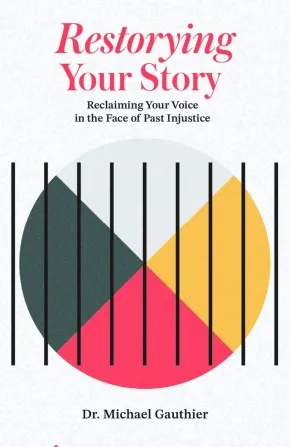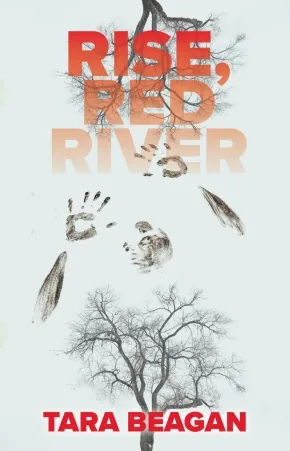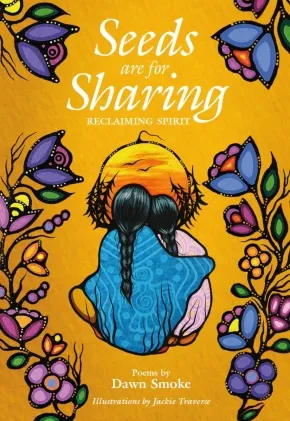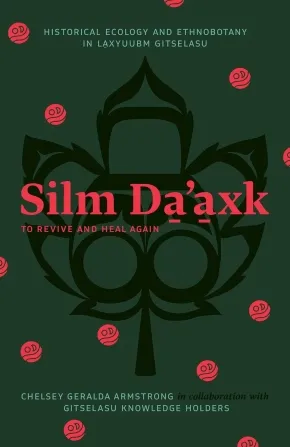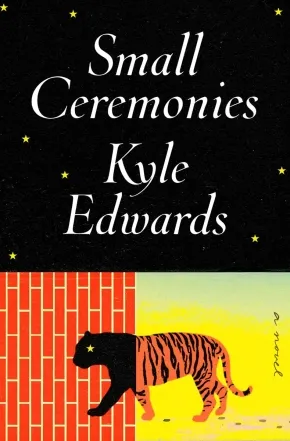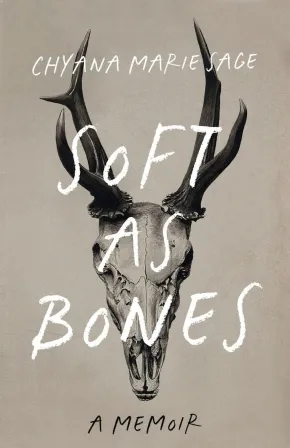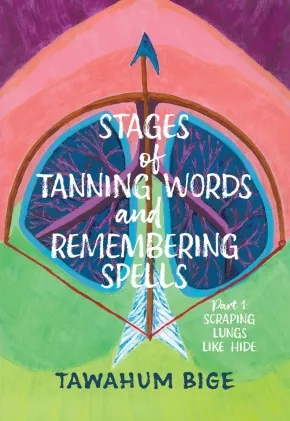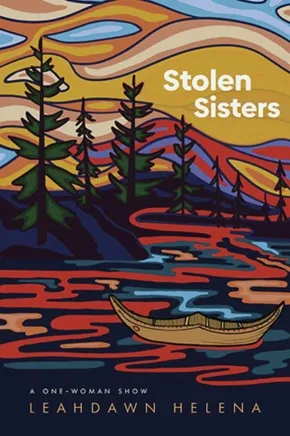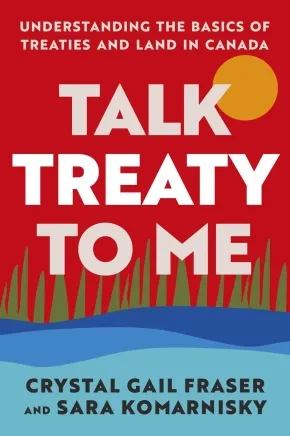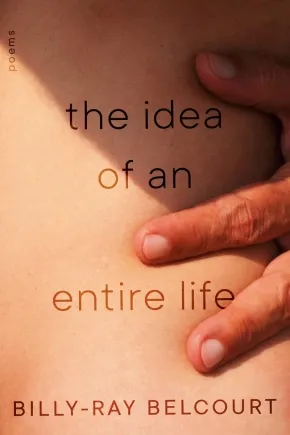
First Nations
46
-
60
of
786 Results;
Sort By
Go To
of 53
Renewal: Indigenous Perspectives on Land-Based Education In and Beyond the Classroom
$37.00
Artists:
Format:
Paperback
Text Content Territories:
Indigenous Canadian;
ISBN / Barcode: 9781774921678
Synopsis:
Synopsis:
A guide that provides ideas and action steps for bringing Indigenous perspectives and philosophies of land-based learning into professional practice, in the classroom and beyond.
Renewal, the second book in the Footbridge series, guides K–12 educators in bringing Indigenous voices and the philosophy, principles, and practices of Indigenous land-based education into their teaching. This text encourages educators to:
- respectfully renew their own relationships with land directly engage students with the land, no matter where they are located
- guide students in learning through observation, listening, and discussion and to take action in response
- honour diverse ways of knowing and being
- understand historic injustices and engage with the contemporary Land Back movement
Through critical engagement with diverse written and visual works created by Indigenous leaders, land defenders, scholars, and Knowledge Keepers, experienced educators Christine M'Lot and Katya Adamov Ferguson support readers in connecting with Indigenous perspectives on land and water. They offer guidance on bringing Indigenous works into the classroom, including concrete ways to facilitate discussions around land-based topics, advice for land-based activities, and suggestions for how students can engage with these topics through inquiry learning.
In this resource, you will find:
- prompts for individual reflection and group discussion
- valuable concepts and methods that can be applied in the classroom and beyond
- practical action steps and resources for educators, parents, librarians, and administrators
Use this book as a springboard for your own learning journey or as a lively prompt for dialogue within your professional learning community.
Reviews
Renewal lays out a simple and practical approach to land-based education. It works from the premise that land-based education is not simply “taking the classroom outside,” but is about "education on the land, about the land, and from the land.” The spiritual foundation of earth-based cultures is about living in your place as one small, equal part of the land (land being the entirety of air, earth, water, living beings, and spirits), a foundation common to most Indigenous cultures on this planet. I hope that others adopt it in their journey to become more holistic educators and maybe even make a positive difference in shaping how we humans interact with the land. — Dr. Garry Merkel, Director, Centre of Indigenous Land Stewardship, The University of British Columbia
Educator & Series Information
For use with grades K to 12.
This book is part of The Footbridge Series. This series aims to bridge curricular outcomes with Indigenous-centered content and perspectives from across Turtle Island. Like a footbridge, this series is intended to provide a path between Indigenous worldviews and the classroom, engaging differences, including tensions, and highlighting the importance of balance, all while helping teachers integrate Indigenous perspectives into multiple disciplines within the K-12 education system.
Contributions by Nicki Ferland, Peatr Thomas, Tyna Legault Taylor, Shannon Webb-Campbell, Tasha Beeds, Sonny Assu, Shalan Joudry, Tricia Logan, Dakota Bear, Shirli Ewanchuk, Dan Henhawk, Réal Carrière, Hetxw'ms Gyetxw Brett D. Huson, Reanna McKay (Merasty)
Photographs by Inuksaq Angotingoar, Makayla Aupaluktuq, Brendan Kingilik, Carina Kingilik, Kyle Lareau, Quin Mikkungwak, Narkyagik, Kaylee Rumbolt, Marissa Scottie, Nathan Snow, Connor Tagoona-Niego, Koen Tapatai, and Shelly Tunguaq
Additional Information
224 pages | 7.00" x 10.00" | Paperback
Restorying Your Story
$20.99
Format:
Paperback
Reading Level: N/A
ISBN / Barcode: 9781778540745
Synopsis:
Synopsis:
The stories we tell ourselves about our lives matter. How we make sense of the past affects how we make sense of the present— it can mean the difference between continuing patterns of harm and being the one to break the cycle. Scholar and author Michael Gauthier knows this struggle intimately. As a young Indigenous man grappling with the lasting effects of colonialism and intergenerational trauma, Michael turned to addiction to ease the pain and found himself in the prison system. In the intervening years, Michael has worked to understand how Indigenous people can find empowerment through the act of restorying their own lives. Gauthier draws on his PhD research in which he carried out Restorying circles using the Medicine Wheel as a guide to help formerly incarcerated Indigenous men map a new future by looking to their past. Now in Restorying Your Story, Gauthier invites readers to explore the universal application of restorying, and how it can be a powerful tool for all of us to build a good life.
Additional Information
150 pages | 8.50" x 5.50" | Paperback
Rise, Red River
$18.95
Format:
Paperback
Text Content Territories:
Indigenous Canadian; First Nations; Anishinaabeg;
Reading Level: N/A
ISBN / Barcode: 9780369105486
Synopsis:
Synopsis:
“The map of the land is in our blood.”
A woman trawls the bottom of a riverbed with a makeshift plough, hoping to dislodge something—anything. The world has drastically changed: rivers run dry, rampant bushfires leave little left to burn. Still she persists searching for the stories of her loved ones, maybe even her own. She is not alone—an ancestor watches nearby. This desolate landscape is about to unearth its long-held secrets.
Inspired by the grassroots organization Drag the Red, which searches for evidence of missing Indigenous women, girls, and 2 Spirit people in the Red River of Treaty One Territory, this ethereal and engrossing drama is a profound offering to those who persevere in spite of sorrow. Told in Anishinaabemowin, English, and French, Tara Beagan’s prophetic play draws a direct connection between the treatment of Indigenous peoples and the abuse inflicted on the land. Fluid and majestic like the river itself, Rise, Red River is an invocation, a revelation, and a call to action.
Educator Information
Told in Anishinaabemowin, English, and French.
Additional Information
112 pages | 5.37" x 8.38" | Paperback
Seeds are for Sharing: Reclaiming Spirit
$20.99
Artists:
Format:
Paperback
Text Content Territories:
Indigenous Canadian; First Nations; Anishinaabeg; Ojibway; Haudenosaunee (Iroquois); Kanyen'keha:ka (Mohawk);
Reading Level: N/A
ISBN / Barcode: 9781778540592
Synopsis:
Synopsis:
"Never let anything or anyone stop you from following where your Spirit says it belongs. . ."
Spirit exists in everything on Mother Earth. If we are open to it, Spirit may guide us through even the darkest of moments.
In this genre-defying blend of poetry and story, Ojibway and Mohawk Elder Dawn Smoke shares all that lives within her heart, mind, and soul. As a young girl confronted with the anger and pain of being scooped from her birth family, Dawn bravely discovers her truth and a path towards healing. She is unwavering in her honesty, a protector of Mother Earth, and a fierce advocate against the oppression of Indigenous people.
Reclaiming what was taken is not an easy feat, yet in doing so, Dawn illuminates the Spirit all around us. This striking memoir, told in spoken word, speaks to the devastating realities of colonization and radiates with the resilience found within culture and community.
Additional Information
120 pages | 5.50" x 8.00" | Paperback
Silm Da'axk / To Revive and Heal Again: Historical Ecology and Ethnobotany in Laxyuubm Gitselasu
$49.99
Format:
Paperback
Text Content Territories:
Indigenous Canadian; First Nations; Tsimshian (Ts'msysen); Gitselasu (Kitselas);
Reading Level: N/A
ISBN / Barcode: 9781771994194
Synopsis:
Synopsis:
The history and ecology of the Skeena River region in the Pacific Northwest is characterized by a complex landscape of interwoven phenomena, driven by biophysical and cultural changes over millennia. Combining archaeological, botanical, and historical research, together with first-hand accounts provided by Gitselasu knowledge holders, this book critically assesses and debunks settler colonial narratives of a wild and untouched landscape in northwestern British Columbia. By focusing on people-plant interactions and landscape changes through time, Silm Da’axk offers insights into the diverse and bustling territories of Gitselasu Ts’msyen. Augmenting these discussions is a vividly illustrated guide to the plants that grow in the region.
From the middle Skeena River to the coast, along creek beds and into alpine meadows, Gitselasu continue to thrive, representing one of the oldest and longest enduring Ts’msyen Nations. Tapping into historical knowledge of the laws (adawx) surrounding plant use and territory ownership, this book highlights the intricate relationships that exist among people, places, and plants.
Educator Information
Gitselasu Knowledge Holders include the many teachers and Elders who contributed to this book, including Wilfred Bennett, Amy Bevan, Mel Bevan, Geneva Mason, Alfie McDames, Isabelle McKee, CJ Nabess, Pat Squires, and countless others. This collaboration was guided by the Kitselas Lands and Resource Department, stewards of Gitselasu lands and waters.
Subjects: Archaeology, Canadian History, Indigenous History, Geography and Landscape, Indigenous Studies.
Additional Information
376 pages | 5.50" x 8.50" | 80 colour illustrations | Paperback
Small Ceremonies: A Novel
$32.00
Format:
Hardcover
Text Content Territories:
Indigenous Canadian;
Reading Level: N/A
ISBN / Barcode: 9780771025617
Synopsis:
Synopsis:
Part coming-of-age novel, part searing examination of a community finding itself, Small Ceremonies is a tantalizing and heartbreaking debut.
“I fear for our friendship, for the day it will end, wondering when that day will be . . .”
Tomahawk Shields (a.k.a. Tommy) and Clinton Whiteway are on the cusp of adulthood, imagining a future rife with possibility and greatness. The two friends play for their high school’s poor-performing hockey team, the Tigers, who learn at the start of the new season that the league wants them out. Their annual goal is now more important than ever: to win their first game in years and break the curse.
As we follow these two Indigenous boys over the course of a year, we are given a panoptic view of Tommy and Clinton’s Winnipeg, where a university student with grand ambitions chooses to bottle her anger when confronted with numerous micro- (and not so micro-) aggressions; an ex-convict must choose between protecting or exploiting his younger brother as he’s dragged deeper into the city’s criminal underbelly; a lonely rink attendant is haunted by the memory of a past lover and contemplates rekindling this old flame; and an aspiring journalist does everything she can to uncover why the league is threatening to remove the Tigers. These are a sampling of the chorus of voices that depicts a community filled with individuals searching for purpose, leading them all to one fateful and tragic night.
Ferociously piercing the heart of an Indigenous city, Kyle Edwards's sparkling debut is a heartbreaking yet humour-flecked portrayal of navigating identity and place, trauma and recovery, and growing up in a land that doesn't love you.
Reviews
“The geographical and familial landscape of the ironically named Whiteway clan yields a subtle and fascinating portrait of growing up Native in Manitoba. The understatement underscores the intensity and contradictions of outgrowing your home and self. This is a truly fine novel.”—Percival Everett, author of James
“Small Ceremonies dropped my jaw with the glittering precision of its detail, and the life-affirming humanity of its characters. Kyle Edwards knows this world of frozen hockey rinks and fishing shacks just as intimately as he knows the warm and broken hearts of this Winnipeg community that he writes about. I haven’t been this excited about a debut in years.”—Michael Christie, author of Greenwood
"Small Ceremonies flattens the grass for us all. A power play of wit, grit, and generational spirit, phenom Kyle Edwards has you rooting for the Tigers when few will. With its scars, scores, and hard-won triumphs, this polyphony of neechies carries us through overtime into glory. A dignified, accomplished, and suave figure-eight of a novel."—Cody Caetano, author of Half-Bads in White Regalia
"In this compelling, multi-voiced first novel, Kyle Edwards carries us north to the landscape of Winnipeg, Manitoba, and into the geography of youth itself. This book—bracing, kaleidoscopic—made me relive those gritty, tender, fragile years before you are fully grown, when you still believe you can do both—stay rooted and fly free."—Danzy Senna, author of Caucasia and Colored Television
"Such a chorus of compelling voices here! I would find myself growing attached to one character only to find the next equally engaging. Edwards is, at once, bracingly honest about and deeply tender towards everyone in this novel. A stunning debut."—Aimee Bender, author of The Butterfly Lampshade
Additional Information
368 pages | 5.50" x 8.25" | Hardcover
Soft as Bones: A Memoir
$26.99
Format:
Paperback
Text Content Territories:
Indigenous Canadian; Métis; First Nations; Cree (Nehiyawak);
Reading Level: N/A
ISBN / Barcode: 9781487013028
Synopsis:
Synopsis:
A poetic memoir as intricately woven as a dreamcatcher about overcoming the pain of generational trauma with the power of traditional healing.
In her deeply affecting memoir, Soft as Bones, Chyana Marie Sage shares the pain of growing up with her father: a crack dealer who went to prison for molesting her older sister. She details the shame and guilt she carried for years after her family's trauma as she went from one dysfunctional relationship to another, from one illegal drug to another. In revisiting her family's history and weaving in the perspectives of her mother and sisters, Chyana examines the legacy of generational abuse, which began with her father's father, who was forcibly removed from his family by the residential schools and Sixties Scoops programs.Yet hers is also a story of hope, as it was the traditions of her people that saved her life. In candid, incisive, and delicate prose, Chyana braids personal narrative with Cree stories and ceremonies, all as a means of healing one small piece of the mosaic that makes up the dark past of colonialism shared by Indigenous people throughout Turtle Island.
Reviews
"Chyana Marie Sage's writing is a gift that gleams with all of its teeth and skin and soft parts of the earth ... A stunning new voice that pushes the boundaries of form, whose stories swirl across time like sweetgrass braids, like tendrils of smoke." — Kinsale Drake, author of The Sky Was Once a Dark Blanket
"A searing, poetic memoir filled with resilience and strength ... for anyone on a journey of reconciling the pain of the past with the hopes for the next generations." — Dallas Goldtooth, writer, actor, and community organizer
"Chyana Marie Sage writes with an unflinching emotional clarity, lyrical prose, and a wisdom well beyond her years." — Tanya Talaga, author of The Knowing
"Soft as Bones moves like a river across vast territories of recovery and reckoning: it moves powerfully and runs deep, with prose that carries many worlds on its shoulders ... Chyana Marie Sage is a truth-teller, and she has given us an incredible gift." — Leslie Jamison, author of Splinters
Additional Information
296 pages | 5.50" x 8.50" | Paperback
Something for the Dark
$19.95
Format:
Paperback
Text Content Territories:
Indigenous Canadian; First Nations; Cree (Nehiyawak);
Reading Level: N/A
ISBN / Barcode: 9781779400888
Synopsis:
Synopsis:
Something for the Dark centres Indigenous knowledge to probe the limits of what we know, confront the unknown, and reckon with our place in the world.
Randy Lundy’s newest collection of poetry—the final in a trilogy that began with Blackbird Song and continued with Field Notes for the Self—turns the poem to our relationships with the land, animals, and people, showing how our failures to see and live by the personhood of all other beings in the world, human and non-, leads inevitably to heartbreak.
As Lundy’s poems accumulate like snow on cedar, his recounting of experiences that transcend language invites the reader to bend their understanding and notice what was once unseen—how a red-winged blackbird clings to a swaying reed, how mist rises after rainfall, how dogs keen and howl, how fingers taste bitter after lighting sage, how hunger smarts, how liquor burns, and how the pain survivors carry is not merely their own.
Reviews
“Such longing! ‘These days I wrestle no angels. I wrestle / with words. And no one is saved.’ writes Randy Lundy. In Something for the Dark, he presents tâpwêwina—truths drawn from the hand dealt and the life lived. ‘Nothing is hidden,’ he suggests, if we take the time to observe from a distance and wait in silence.” — Rita Bouvier, author of a beautiful rebellion
Additional Information
96 pages | 5.51" x 8.50" | Paperback
Stages of Tanning Words and Remembering Spells: Part 1: Scraping Lungs Like Hide
$19.95
Format:
Paperback
Text Content Territories:
Indigenous Canadian; First Nations; Dene; Denesuline (Chipewyan); Lutsel K'e Dene First Nation ;
Reading Level: N/A
ISBN / Barcode: 9780889714601
Synopsis:
Synopsis:
In their second poetry collection, Tawahum Bige explores belonging and voice of a Two-Spirit Dene youth.
These poems are a stark plunge—an answer to how voice emerges for a young Two Spirit growing up in so-called “Surrey, BC,” far from his Łutselk'e Dene territories. The fundamental thrum in which vocal cords produce sound to whisper, cry, holler and laugh—these inner workings are made corporeal through moments of growth from childhood to young adulthood to show how the seeds sprouted for someone who needed to learn to express to find their path.
Additional Information
96 pages | 5.50" x 8.00" | 25 colour and b&w photographs | Paperback
Stolen Sisters
$19.95
Format:
Paperback
Text Content Territories:
Indigenous Canadian; First Nations; Beothuk;
Reading Level: N/A
ISBN / Barcode: 9781778530456
Synopsis:
Synopsis:
Stolen Sisters is a first-of-its-kind play that gives voice to the lives and legacies of three Beothuk women and girls whose names have survived in historical record.
These are stories that have been mis-told, misrepresented, and mythologized by colonial interference. By shifting the lens of history to reflect Indigenous perspective and experience, the women brought to life in Stolen Sisters set the record straight, telling their own stories with both humour and unflinching honestly. Based on the oral and written Indigenous histories of colonization locally and worldwide, the voices of Stolen Sisters shine a light on the global experience of Indigenous women and girls and, in particular, Newfoundland's part in that legacy.
Additional Information
96 pages | 5.57" x 8.37" | Paperback
Surviving the City Teacher Guide: Exploring Identity, Allyship, and Social Action for Meaningful Change in Grades 7-12
$25.95
Format:
Paperback
Text Content Territories:
Indigenous Canadian; First Nations; Anishinaabeg; Cree (Nehiyawak);
ISBN / Barcode: 9781774921401
Synopsis:
Synopsis:
This updated Teacher Guide for Surviving the City is designed to accompany the Surviving the City series of graphic novels written by Tasha Spillett. This guide provides support for teachers to address sensitive topics in the classroom including racism; caregiver illness; the child welfare system; residential schools; and Missing and Murdered Indigenous Women, Girls, and Two-Spirit People. With the release of the third volume of Surviving the City, this guide has been updated to include revisions to the original lessons, two brand-new lessons, as well as up-to-date curriculum correlation charts that match current curriculum outcomes and expectations in Ontario, British Columbia, and Manitoba.
This teacher guide is designed to be a no-prep resource for educators suitable for stand-alone lessons or as a complete unit plan. The lessons in this teacher guide:
- support teachers with clear and concise instructions using the Activate, Acquire, Apply, and Assess (AAAA) format
- guide students in exploring, researching, and sharing the essential themes of the graphic novels
- are infused with Indigenous pedagogical practices
The Teacher Guide for Surviving the City is best suited for use with students in grades 7–12 taking English Language Arts; First Nations, Métis, and Inuit Studies; Global Issues; and similar subjects.
Educator Information
The student books for this work can be found here: Surviving the City Series.
Additional Information
91 pages | 8.50" x 11.00" | Paperback
Taaqtumi 2: An Anthology of Arctic Horror Stories
$22.95
Format:
Paperback
Text Content Territories:
Indigenous Canadian; Inuit;
Grade Levels: 12; University/College;
ISBN / Barcode: 9781772275834
Synopsis:
Synopsis:
This new collection of horror short fiction weaves together contemporary Arctic settings with ancient monsters and mysterious beings that have been said to stalk the tundra for centuries.
Featuring authors from across the Canadian Arctic, this new volume of Taaqtumi—an Inuktitut word that means “In the Dark”—reveals just how horrifying the dark can be.
Featuring new fiction from award-winning authors Aviaq Johnston, Rachel and Sean Qitsualik-Tinsley and Jamesie Fournier, as well as new voices in the genre, this collection is perfect for any horror lover.
Educator & Series Information
Includes stories from Indigenous authors across the Canadian Arctic.
This book is part of the Taaqtumi series.
Additional Information
184 pages | 6.00" x 9.00" | b&w illustrations | Paperback
Talk Treaty to Me: Understanding the Basics of Treaties and Land in Canada
$22.99
Format:
Paperback
Text Content Territories:
Indigenous Canadian;
Reading Level: N/A
ISBN / Barcode: 9781443471169
Synopsis:
Synopsis:
An essential and easy-to-read guide to treaties, Indigenous sovereignty, and land for all Canadians
Treaties cover much of Canada. Some were established thousands of years ago, with land and animals, and others date back to the time when Europeans first arrived in North America. These agreements make it possible for all of us to live, work, play, and profit on these lands. Additionally, treaties have profoundly shaped the relationship between Indigenous and non-Indigenous people. In Talk Treaty to Me, Crystal Gail Fraser and Sara Komarnisky untangle the complexities of treaties and set a path forward for greater understanding of all our roles, rights, and responsibilities. In this accessible, clear, and concise book, they discuss:
· Treaties among and between Indigenous Peoples
· The history of treaty-making between Indigenous Peoples and Britain, then Canada, from the very beginning to the present day
· Concepts like Métis scrip, modern land claims, Indigenous sovereignty, and unceded territory
· The (dis)honouring of treaties and the role of Canadian settler colonialism
· How the creation of Canadian borders interrupts Indigenous sovereignty and nationhood
· Important insights from gendered and queer perspectives on treaty and land
· The politics of land acknowledgements
· Reconciliation and Land Back movements
And more.
With a quick-reference timeline, maps, and black-and-white photographs throughout, Talk Treaty to Me concludes with a call to action and specific, tangible steps that all of us can take every day to support reconciliation.
Additional Information
256 pages | 5.25" x 8.00" | 40 b&w photos, spot illustrations & maps | Paperback
The Cree Word for Love: Sâkihitowin
$34.99
Artists:
Format:
Hardcover
Text Content Territories:
Indigenous Canadian; First Nations; Cree (Nehiyawak);
Reading Level: N/A
ISBN / Barcode: 9781443467780
Synopsis:
Synopsis:
Bestselling author of Birdie, Tracey Lindberg, and renowned artist George Littlechild join together in a stunning collaboration of story and art to explore love in all its forms—romantic, familial, community and kin—in the Cree experience.
In The Cree Word for Love, author Tracey Lindberg and artist George Littlechild consider a teaching from an Elder that in their culture, the notion of love as constructed in Western society does not exist. Here, through original fiction and select iconic paintings, Lindberg and Littlechild respond.
Together they have created and curated this collaboration which travels, season by season, mirroring the four rounds in ceremony, through the themes of the love within a family, ties of kinship, desire for romantic love and connection, strength in the face of loss and violence, and importance of self-love, as well as, crucially, a deeper exploration of the meaning of “all my relations.”
Together, art and story inspire and move readers to recall our responsibilities to our human and more than human relations, to think about the obligation that is love, and to imagine what it could possibly mean to have no Cree word for love. The result is a powerful story about where we find connection, strength, and the many forms of what it means to live lovingly.
Additional Information
224 pages | 6.00" x 8.00" | 20 full-color photos of paintings | Hardcover
The Idea of an Entire Life: Poems
$25.00
Format:
Hardcover
Text Content Territories:
Indigenous Canadian; First Nations; Cree (Nehiyawak); Woodland Cree; Woods Cree; Driftpile First Nation;
Reading Level: N/A
ISBN / Barcode: 9780771014017
Synopsis:
Synopsis:
Daring and vulnerable, this is the highly anticipated new collection from Griffin Poetry Prize winner Billy-Ray Belcourt.
In The Idea of An Entire Life, Belcourt delivers an intimate examination of twenty-first-century anguish, love, queerness, and political possibility. Through lyric verse, sonnets, fieldnotes, and fragments, the poems, sometimes heart-breaking, sometimes slyly humorous, are always finely crafted, putting to use the autobiographical and philosophical style that has come to define Belcourt’s body of work. By its close, the collection makes the urgent argument that we are each our own little statues of grief and awe.
Reviews
"To read Billy-Ray Belcourt’s The Idea of An Enitre Life is to experience genre as a place between landscapes, but also beyond them: horizon as 'line break,' infrastructure as 'wound,' 'an image of a forest someone else/was supposed to know by heart.' These poems are achingly beautiful. Belcourt writes what’s already broken, breaking in real-time, 'in order to repair it.' How this new form might arrive, 'miraculously' but also diligently, an act of recuperation and courage that’s on-going, 'meandering' but also (always) 'incomplete,' becomes what happens when we read."—Bhanu Kapil
Additional Information
96 pages | 5.00" x 7.50" | Hardcover
Sort By
Go To
of 53




